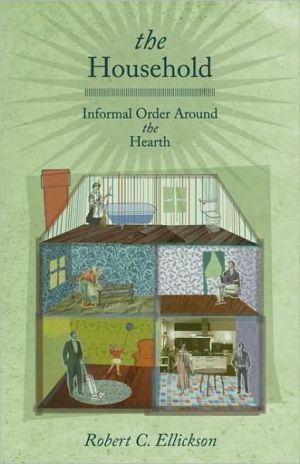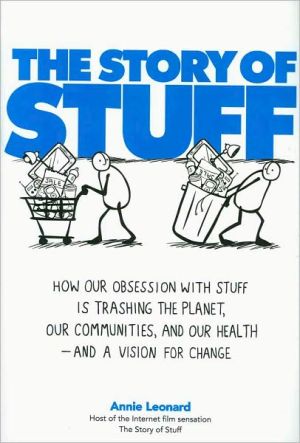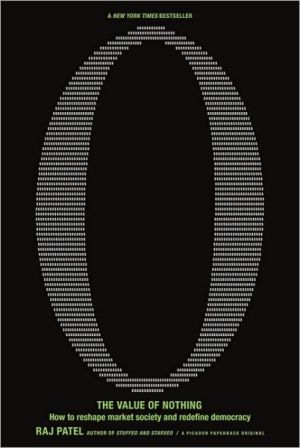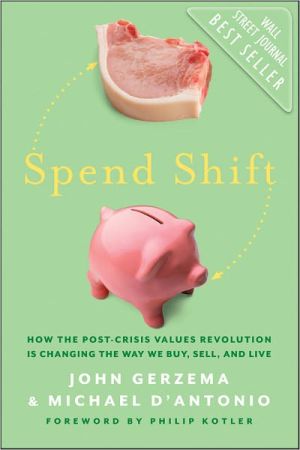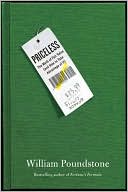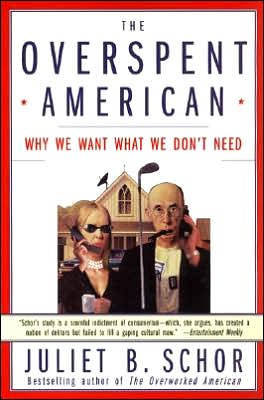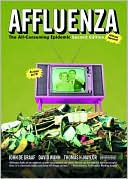The Household: Informal Order around the Hearth
"Some people dwell alone, many in family-based households, and an adventuresome few in communes. The Household is the first book to systematically lay bare the internal dynamics of these and other home arrangements. Legal underpinnings, social considerations, and economic constraints all influence how household participants select their homemates and govern their interactions around the hearth. Robert Ellickson applies transaction cost economics, sociological theory, and legal analysis to...
Search in google:
"This book is very original. Most of the similar literature on the law and economics of the family is contracts- rather than property-based, and the author displays a tremendous knowledge of the literature in a number of related fields. It is a wonderful piece of work and an excellent addition."--Margaret F. Brinig, University of Notre Dame"This is a very good book. The approach is valuable and insightful, and brings solid economic analysis to an institution that, I am convinced, is understudied and poorly understood. I enjoyed this book and learned a lot from it."--George P. Baker, Harvard Business School Lucy Worsley - Times Literary Supplement Robert C. Ellickson defines the household as a voluntary grouping of relatives or non-relatives living under the same roof. As he points out in his engaging study, this pervasive institution has received surprisingly little attention from social theorists. . . . The Household, a short, curious and enjoyable book, provides a novel way of looking at an institution from which very few of us can escape.
The Household Informal Order around the Hearth \ \ By Robert C. Ellickson Princeton University Press \ Copyright © 2008 Princeton University Press\ All right reserved.\ ISBN: 978-0-691-13442-0 \ \ \ Chapter One How Households Differ from Families \ An extraterrestrial visitor would immediately notice that most earthlings spend over half their time clustered together in small dwellings-working, eating, sleeping, and socializing. From on high, these household relationships plainly appear to be among the most basic of human arrangements. This book investigates, mostly from the bottom up rather than the top down, how people create and manage these domestic microcosms to which they can retreat from the hurly-burly of larger society.\ Most homes have more than one resident and many have multiple owners. These household participants must devise methods of dealing with both the mundane and unexpected challenges of collective living. By devising better domestic practices-homeways, for short-a household's participants can greatly improve the quality of their lives. Designers of utopian communities deserve credit for recognizing this essential truth (but also reproach for failing to discern some economic realities that constrain household organization).\ It is important at the outset to distinguish a household from both a marriage and a family, two closely related (and more extensively studied) social molecules with which it is commonly confused. A "household" is a set of institutionalarrangements, formal or informal, that govern relations among the owners and occupants of a particular dwelling space where the occupants usually sleep and share meals. By this definition, a studio apartment with a single owner-occupant is a household, and so is a kibbutz where hundreds of members dine communally. A study of a household thus is an investigation into the allocation of entitlements in a specific physical setting. The members of a household (that is, its owners and occupants) together manage a real estate enterprise that makes use of inputs of land, capital, and labor in order to provide shelter, meals, and other services. Members of an intimate household, through their repeated interactions, typically generate a set of norms to govern their behavior, including their duties to supply household inputs and their rights to share in household outputs.\ Although often confused with "household," "marriage" denotes something else, namely a legal relationship between two people that is not specific to any one location. Over the course of a lifetime, an individual is likely to participate in dozens of different households, but in no more than one or two marriages. The state, which doesn't bother to regulate the formation and termination of household relationships, closely regulates entry into and exit from marriage. Of course, when marital partners cohabit a home they jointly own, their household ties are deeply intertwined with their marital ties. The domain of their marital relationship, however, differs significantly from the domain of their household relationship. Much of marital property law addresses entitlements to assets other than the marital home, such as children, financial accounts, and the spouses' aggregate human capital. In that sense, a marital relationship is broader and more multifaceted than a household relationship. Conversely, marital law does not apply to many significant household relationships. First, when marriage partners cohabit, other kinfolk and non-kinfolk commonly are present in their home. In the United States in 2004, for example, married couples were the sole occupants of less than 39 percent of multiperson households. Second, a married couple need not cohabit. Indeed, in the United States, 7 percent of married persons do not live with their spouses. These separated couples include, among others, spouses en route to divorce, spouses in commuting marriages, and spouses in marriages in which one member is institutionalized or on military duty. Third, marriage partners who cohabit are not necessarily also the co-owners of their dwelling unit; others may join them as co-owners, they may lease their dwelling from others, or their home may be owned by only one partner. To emphasize the institutional distinction between marriage and the household, the discussion to come commonly features relationships within nonmarital households.\ In a liberal society, individuals voluntarily choose both their household and marital partners. "Family" ties, by contrast, are largely determined by biology. An individual, however, can also voluntarily add kinfolk by marrying or adopting, two highly legalized procedures. Nonetheless, families are far more stable than households. At death, the members of the decedent's family can be charted in a unique family tree. By genealogical convention, a family tree does not refer to a decedent's sequential household relationships, which typically were far more ephemeral and tangled (and also conceivably far more meaningful) than her family relationships. Family members, even more obviously than spouses, need neither cohabit nor co-own, and cohabitants and co-owners need not be kin. In the United States, the number of multiperson households in which none of the occupants had family ties increased almost sixfold between 1970 and 2004. These nonfamily households, which contained 12.3 million people in 1998, appear in a wide variety of incarnations. Examples include university students living as housemates, unmarried heterosexual couples, gay and lesbian partners, welfare recipients or recent immigrants clustering to economize on rent, and idealists teaming up in a commune.\ Most studies of the "family"-including those by leading scholars such as Gary Becker and the team of Shelly Lundberg and Robert Pollak-focus not on the structure of household institutions as such but on marriages, parent-child relationships, and nonmarital child custody. An influential dissertation on the "family" by the editors of the Harvard Law Review addresses numerous issues that arise out of the legal regulation of households, but virtually never uses the word "household" and doesn't explicitly recognize that families and households are distinct institutions. Even a scholarly work that includes the word "household" in its title commonly concentrates almost entirely on family, marital, and premarital associations.\ The household is eminently worthy of study as an institution distinct from marriage and the family. Even in industrialized nations, dwellings are still the sites of a large fraction of economic and social activity. According to a leading study by Robinson and Godbey, in 1985, American women, irrespective of their marital and employment status, were spending an average of 30.9 hours a week on housework, and men, 15.7 hours. In the United States, recent estimates of the value of within-household production (most of it unpaid) have run from 24 percent to 60 percent of gross domestic product (GDP)-that is, to several trillions of dollars per year.\ The norms that govern household affairs, moreover, have had Promethean influence. Households have been ubiquitous throughout human history, and the rules that our ancestors developed to resolve problems arising around their hearths provided templates for achieving cooperative solutions in settings outside the home. Even today it is typically within the household that children first learn how to recognize and deal with challenges posed by endeavors involving common property and collective enterprise. Much of the analysis to be offered here can be directly applied to the governance of other forms of real estate typically co-owned and co-occupied by intimates-for example, small farms and retail outlets. More grandly, study of the household promises to shed light on the organizational logic of larger and far more complex business entities that are based outside the home.\ Given the importance and centrality of the household as a distinct institution, it is surprising that social scientists have tended to slight its study. Consider the field of economics. Although the etymological root of "economics" is oikos (the ancient Greek word for household), prior to 1970 economists-with a few important exceptions such as Margaret Reid-paid no more than passing attention to home economics. After 1970, Gary Becker, Robert Pollak, and other leading economists began to do foundational work on the domestic sector, but their works mostly stress the structuring and dynamics of marital and child custody relationships. Legal scholars also tend to focus on issues of marital and family law, not on how people organize home production and consumption. This priority is understandable. Co-occupants who share a hearth usually dispense with written contracts and other legal formalities. When a domain generates little business for attorneys, legal scholars tend to turn their attention elsewhere.\ While institutional economists and legal scholars have largely neglected the household as such, numerous demographers, sociologists, and social historians have examined the institution. In the first book of The Politics, Aristotle envisions the household (oikos) as the basic building block of more encompassing forms of political life-first the village, and, beyond that, the city (polis). Plato, Thomas More, Charles Fourier, B. F. Skinner, and other utopian thinkers have imagined new institutional arrangements for providing housing and meals. There have been incessant experiments with unconventional households, such as monasteries, kibbutzim, and, more recently, co-housing developments that enable nuclear households to engage in congregate dining several times a week.\ Basic positive questions about the institution of the household abound. Why are the occupants (and also, for that matter, the owners) of a dwelling unit so often related by kinship? Why has the average number of occupants per household fallen, particularly during the twentieth century? More fundamentally (and to redirect questions Ronald Coase famously asked in another context), why don't all adults live alone? or, conversely, all in one huge household? How do household members formulate their homeways-the rules that govern their relationships? And what sorts of rules are they likely to favor?\ This book is an initial foray into developing answers to these sorts of questions. Its chief goals are to provide a structure for thinking about the household, to systematize and augment what is already known, and to stimulate scholars and students to devote more attention to the constitution and governance of the home. Much of the analysis in the ensuing chapters stresses how both background legal conditions and stubborn economic realities profoundly influence how people shape their home lives. One recurring thesis is that individuals, across cultures and historical eras, have tended to structure their households, even ones sustained by love and affection, with a close eye to reducing the transaction costs of their domestic interactions. I assert that transaction-costs considerations, for example, typically prompt household participants to keep their numbers small (see chapter 4), tend to doom to an early demise a strongly communal intentional community with a secular orientation (see chapter 5), and help induce householders to become homeowners (see chapter 7). Because transaction costs exist in many forms, many of which are not directly measurable, the thesis that household participants are attentive to these costs is difficult to test quantitatively. In the end, the plausibility of the thesis therefore rests largely on the intuitive persuasiveness of the examples marshaled to support it.\ My emphasis on factors that invariably affect how individuals set up households should not be interpreted, of course, as an assertion that cultural variables have no influence on the shape of domestic life. There is a massive literature on cultural differences in household institutions, including both classics such as E. Franklin Frazier's The Negro Family in the United States and many insightful contemporary works. While unquestionably valuable, these particularized studies tend to downplay factors that affect household organization under all social conditions. A major aim of the present work is to complement these rich, but narrow, cultural studies by identifying forces with universal influence.\ Chapter 2 sets the foundation. It begins by unpacking the three distinct relationships-co-occupancy, co-ownership, and landlord-tenant-that may exist within a household. It then introduces the notion of the "liberal household," that is, the sort of institution likely to emerge when background principles of law and norms generally support individual rights of self-determination. Chapter 3 offers reasons why individuals in a liberal society, when they form household relationships, are likely to choose to consort with intimates. This strategy, among its other virtues, enables household participants to coordinate informally and relatively cheaply. Chapter 4, the empirical heart of the book, marshals demographic evidence about household forms and demonstrates the wide popularity, in each of the three basic household relationships, of the strategy of consorting with intimates. Although much of the proffered evidence pertains to contemporary conditions in the United States, some attention is paid here and elsewhere in the book to households in other nations and other time periods. Chapter 5 raises the issue of the optimality of the process of household formation and reviews utopians' proposals for radical transformation of conventional household forms. Chapters 6 and 7 bring the theory of business enterprise to bear on the issue of household ownership and on the determinants of the number of participants in household relationships. Like participants in a business firm, members of a household typically confer ownership on providers of at-risk capital, not on occupants who labor within a home. Particularly when some or all of the owners of a dwelling are absentees, this may give rise to the separation of ownership from control-a homespun version of a problem much analyzed in the business context. Chapter 8 investigates alternative processes of internal household governance, including law, norms, and contracts. A central claim is that, in a liberal society, while law provides fundamental background rules that enable household formation, more specific small-bore private-law rules have little relevance to everyday domestic affairs. Instead of following legal niceties, intimate co-occupants and co-owners typically create household-specific home-ways either by oral agreement, or even more commonly, through a pattern of informal gift exchange. Even non-intimates, such as a tenant and an absentee landlord, are likely to strive to avoid involvements with the legal system. Chapter 9 concludes with a brief synthesis and a discussion of opportunities for further exploration into the functioning of household institutions.\ (Continues...)\ \ \ \ \ Excerpted from The Household by Robert C. Ellickson\ Copyright © 2008 by Princeton University Press. Excerpted by permission.\ All rights reserved. No part of this excerpt may be reproduced or reprinted without permission in writing from the publisher.\ Excerpts are provided by Dial-A-Book Inc. solely for the personal use of visitors to this web site. \ \
Ch. 1 How households differ from families 1Ch. 2 Household formation and dissolution in a liberal society 10Ch. 3 The predominant strategy : consorting with intimates 27Ch. 4 A historical overview of household forms 35Ch. 5 Are the household forms that endure necessarily best? 46Ch. 6 Choosing which of a household's participants should serve as its owners 60Ch. 7 The mixed blessings of joining with others 76Ch. 8 Order without law in an ongoing household 92Ch. 9 The challenge of unpacking the household 128App. A Data on intentional communities 137App. B Data on co-housing communities 145Notes 147Works cited 199Index 237
\ The New RepublicEllickson's book represents a skillful use of the analytical tools of the law-and-economics movement to understand relations within the household—a complicated machine for living that involves a large number of joint decisions. . . . Ellickson's book pushes us to think more clearly about the benefits and the costs of homeownership. His book makes sense of one of the most striking facts in the homeownership literature: the extremely tight relationship between structure type and ownership. . . . Houses are most Americans' most important asset. They are the stages on which we live our lives. And so housing policy is worthy of intense attention—but until the current crisis housing policy existed in the netherworld of the more unglamorous public pursuits. Perhaps our present-day troubles will create the opportunity to produce better housing policies, or so I hope. Robert Ellickson's ideas can certainly help.\ — Edward Glaeser\ \ \ \ \ Canadian Journal of SociologyBy pulling together a range of diverse topics and data, the book is thought-provoking. It is dense but readable, and Ellickson presents economic arguments in an accessible way. Reading it challenged (and energized) me to think about the unique contribution of sociological explanations.\ — Carrie Yodanis\ \ \ Times Literary Supplement\ - Lucy Worsley\ Robert C. Ellickson defines the household as a voluntary grouping of relatives or non-relatives living under the same roof. As he points out in his engaging study, this pervasive institution has received surprisingly little attention from social theorists. . . . The Household, a short, curious and enjoyable book, provides a novel way of looking at an institution from which very few of us can escape.\ \ \ \ \ The New Republic\ - Edward Glaeser\ Ellickson's book represents a skillful use of the analytical tools of the law-and-economics movement to understand relations within the household—a complicated machine for living that involves a large number of joint decisions. . . . Ellickson's book pushes us to think more clearly about the benefits and the costs of homeownership. His book makes sense of one of the most striking facts in the homeownership literature: the extremely tight relationship between structure type and ownership. . . . Houses are most Americans' most important asset. They are the stages on which we live our lives. And so housing policy is worthy of intense attention—but until the current crisis housing policy existed in the netherworld of the more unglamorous public pursuits. Perhaps our present-day troubles will create the opportunity to produce better housing policies, or so I hope. Robert Ellickson's ideas can certainly help.\ \ \ \ \ Choice\ - D.J. Conger\ This volume is a tour de force! Ellickson takes the reader on an erudite, highly informative journey through the household in all of its many manifestations and facets. . . . The reader enjoys a catholic view of why households persist; why they are the size they are; how ownership versus rental decisions are made; what motivates adding or shedding household members; and most fascinatingly, how informal norms regulate household occupant behavior with little formal and explicit societal legislation.\ \ \ \ \ Law and Politics Book Review\ - Patricia McGee Crotty\ Through its methodological synthesis of economic with legal and sociological analysis, this text serves as an important primer on household structures in liberal societies.\ \ \ \ \ Canadian Journal of Sociology\ - Carrie Yodanis\ By pulling together a range of diverse topics and data, the book is thought-provoking. It is dense but readable, and Ellickson presents economic arguments in an accessible way. Reading it challenged (and energized) me to think about the unique contribution of sociological explanations.\ \ \ \ \ Choice\ - D. J. Conger\ \ This volume is a tour de force! Ellickson takes the reader on an erudite, highly informative journey through the household in all of its many manifestations and facets. . . . The reader enjoys a catholic view of why households persist; why they are the size they are; how ownership versus rental decisions are made; what motivates adding or shedding household members; and most fascinatingly, how informal norms regulate household occupant behavior with little formal and explicit societal legislation.\ \ \ \ \ ChoiceThis volume is a tour de force! Ellickson takes the reader on an erudite, highly informative journey through the household in all of its many manifestations and facets. . . . The reader enjoys a catholic view of why households persist; why they are the size they are; how ownership versus rental decisions are made; what motivates adding or shedding household members; and most fascinatingly, how informal norms regulate household occupant behavior with little formal and explicit societal legislation.\ — D. J. Conger\ \ \ \ \ Times Literary SupplementRobert C. Ellickson defines the household as a voluntary grouping of relatives or non-relatives living under the same roof. As he points out in his engaging study, this pervasive institution has received surprisingly little attention from social theorists. . . . The Household, a short, curious and enjoyable book, provides a novel way of looking at an institution from which very few of us can escape.\ — Lucy Worsley\ \ \ \ \ Law and Politics Book ReviewThrough its methodological synthesis of economic with legal and sociological analysis, this text serves as an important primer on household structures in liberal societies.\ — Patricia McGee Crotty\ \
